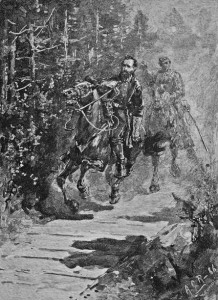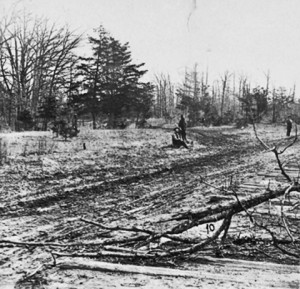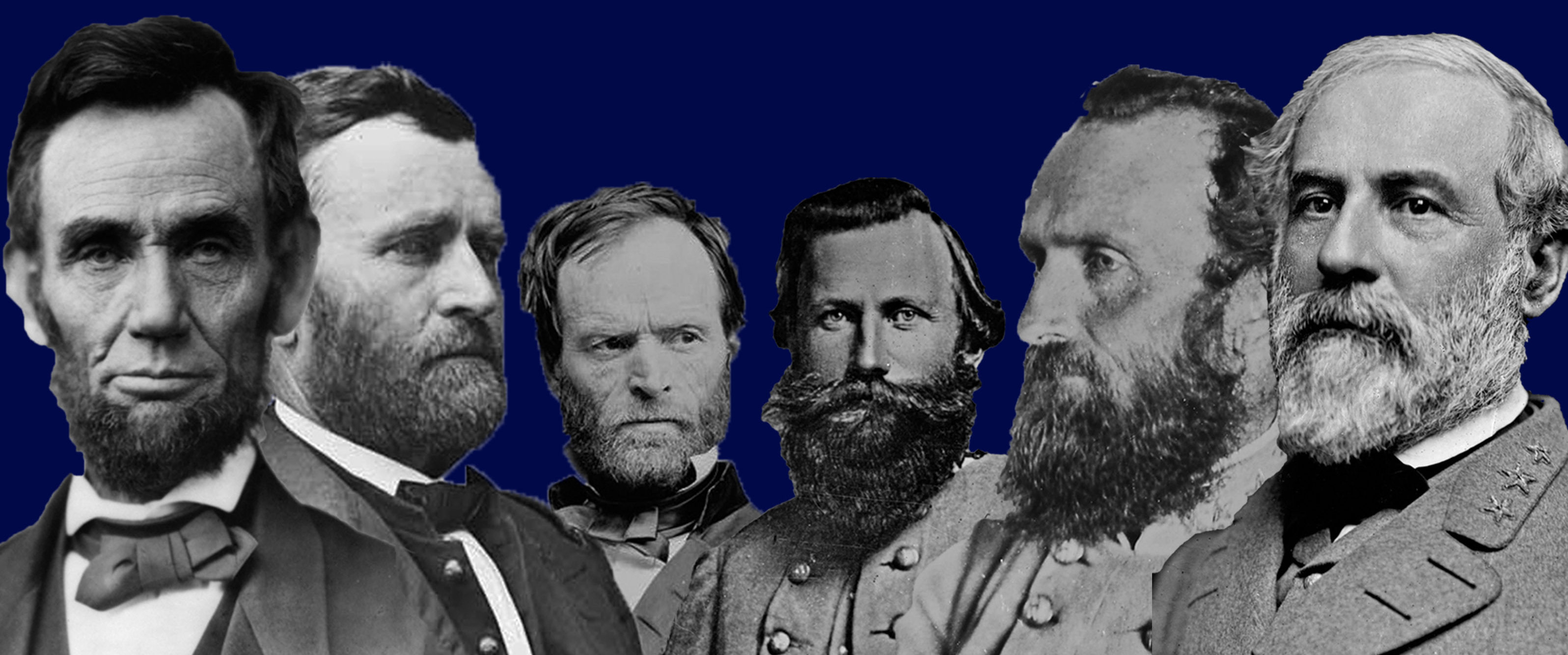
Battles and Leaders of the Civil War
On the night of May 2, 1863 – the second day of the battle of Chancellorsville – Stonewall Jackson decided to personally reconnoiter the ground in front of his line in anticipation of renewing his successful attack on the right flank of the Union army. But as Jackson and his staff rode back to the Confederate line, they were mistaken for Union cavalry and fired upon by members of the 18th North Carolina Regiment. Hit by three bullets, Jackson would die eight days later from a pneumonia that developed during his recovery.
Although the outcome of Jackson’s fatal reconnaissance is clear, the road on which he performed the activity has been the subject of debate for more than one hundred years. Most modern interpretations of the event describe Jackson riding down the Mountain Road, an isolated and narrow path that paralleled the main thoroughfare of the Orange Plank Road. This interpretation is based almost exclusively on the written account of a single individual – Pvt. David Kyle of the 9th Virginia Cavalry.
Kyle, a local youth who had lived on the nearby Bullock farm, claims he was Jackson’s guide that night as he led the general down and back along the Mountain Road. But Kyle wasn’t the only participant to document the event; multiple individuals on Jackson’s staff and A.P. Hill’s staff described the event in later writings. In fact, ten separate individuals did so, and each one related that Jackson rode down the Plank Road, not the Mountain Road.
For the first thirty years following the event, no debate existed as to the route Jackson had taken that night – all maintained it to be the Plank Road. Jackson’s early biographers, John Esten Cooke and Robert L. Dabney, both of whom had direct interaction with Jackson’s staff while writing their separate 1866 books, described the event as being on the Plank Road. Then, in the early 1890s, Augustus Choate Hamlin began research for his book, The Battle of Chancellorsville: The Attack of Stonewall Jackson and His Army, Upon the Right Flank of the Army of the Potomac at Chancellorsville, Virginia, on Saturday Afternoon May 2, 1863. During a visit to the battlefield, Hamlin was introduced to David Kyle, who provided the author with an account of his exploits.

Library of Congress
Hamlin attempted to confirm Kyle’s facts by corresponding with several Confederate officers present on the night of May 2, 1863. Each one directly refuted Kyle’s assertion that Jackson rode down the Mountain Road. William Palmer, an assistant adjutant to A.P. Hill at the time, wrote to Hamlin on September 15, 1894:
You will see that Capt. Leigh and Capt. Wilbourn exactly agree, as to where we were when first fired on, from the right or south side of the Pike. There are three witnesses to this point and the location of the dismantled house on the right, or south side makes it very certain to me that we are correct and Kyle 9th Virginia Cavalry, wrong, as to this point.
Despite all evidence to the contrary, Hamlin accepted Kyle’s version as accurate, specifying in his 1896 book that Jackson rode down the Mountain Road. Later that year, Kyle also sent a copy of his account to Confederate Veteran magazine, which published an edited version of the manuscript in its September 1896 issue. The publication of Hamlin’s book and Kyle’s account sparked another round of rebuttal among members of Jackson’s staff, primarily Jed Hotchkiss and James Power Smith.
While researching his book, Stonewall Jackson and the American Civil War, author G.F.R. Henderson wrote Hotchkiss asking for his opinion on the recent disagreement between primary accounts. Hotchkiss responded in a July 23, 1897 letter: “If you follow Hamlin’s statements you will make great mistakes. He is laboring to establish a theory and to twist everything to agree with that theory.” Ultimately, Henderson did reject Kyle’s version, sending Jackson down the Plank Road in his 1898 book.
David Kyle’s account resurfaced in Douglas Southall Freeman’s Lee’s Lieutenants after a friend of the author, who also knew Kyle, vouched for his credibility. Ernest B. Furgurson then used the account in his 1992 book, Chancellorsville 1863. Conversely, author Stephen W. Sears discarded Kyle’s version for his 1996 battle study, Chancellorsville. In a brief analysis of Kyle’s account in Appendix III of the book, Sears states: “Kyle’s account is unsupported and unsupportable”; concluding with: “The best that may be said of David Kyle’s story is that it is all true – except for Jackson’s presence in it.”
None of the primary accounts from other participants in the event ever mention David Kyle as being present, either during the reconnaissance or during Jackson’s removal from the field following his wounding. Instead, the young guide self-reports his involvement thirty years after the fact.
Statistically speaking, Kyle’s story is an outlier. His lone version of the event is contrary to at least ten other first-person accounts, all of which agree with one another. It’s improbable that everyone, other than Kyle, made the same mistake on such a crucial point. Therefore, in order to contend that Jackson made his fatal journey down the Mountain Road as opposed to the Plank Road, one must be comfortable with simultaneously rejecting the vast majority of the primary evidence.

Leave a Reply